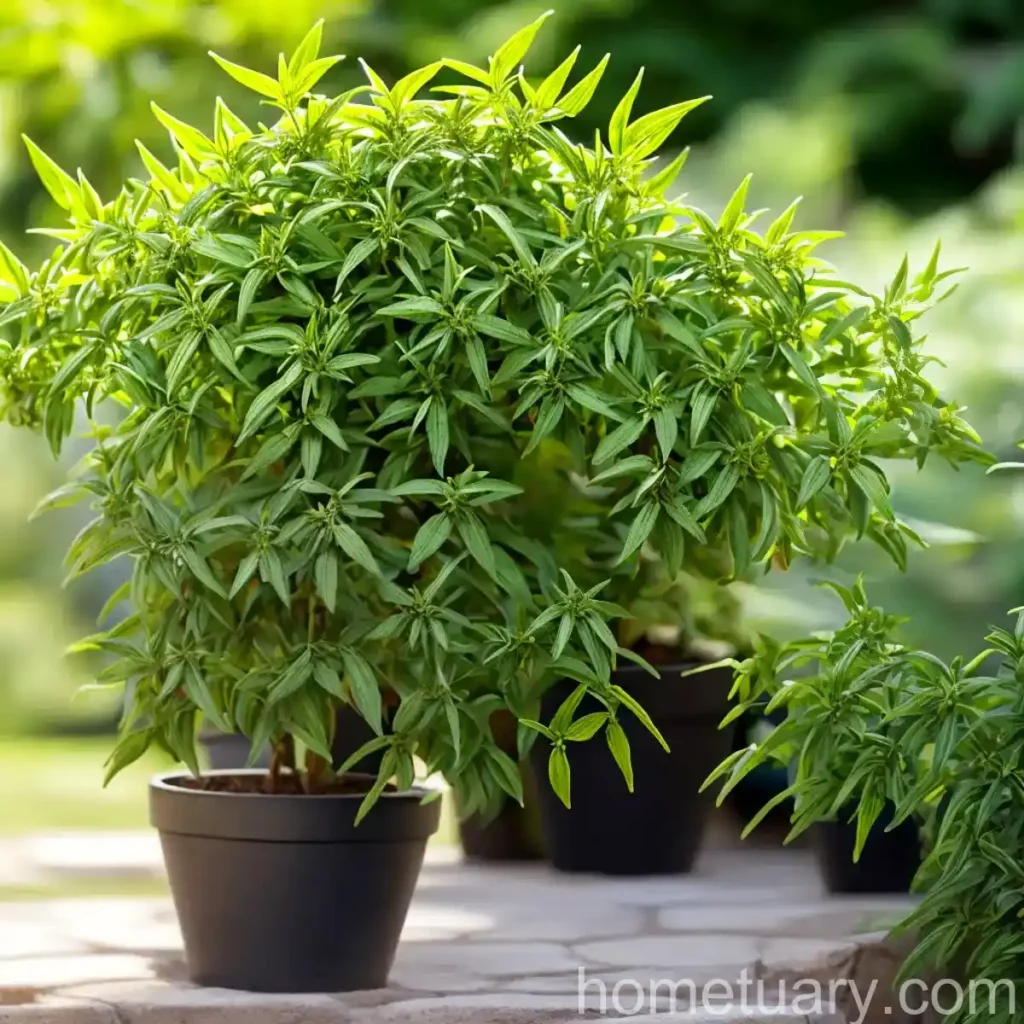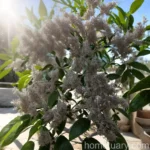Lemon Verbena (Aloysia citriodora) – A Comprehensive Guide
Lemon verbena (Aloysia citriodora) is a fragrant and versatile plant that has been prized for centuries for its culinary, medicinal, and aromatic properties. In this comprehensive guide, we will delve into the culture, uses, care, and propagation of lemon verbena, along with tips from botanists, common diseases and pests, and some fun facts about this remarkable plant.
What is Lemon Verbena (Aloysia citriodora)?
Lemon verbena (Aloysia citriodora) is a perennial shrub native to South America, specifically Argentina and Chile. It belongs to the Verbenaceae family and is prized for its intense lemon scent and flavorful leaves. Lemon verbena is characterized by its elongated, narrow leaves and delicate clusters of white or pale lilac flowers.
Key Takeaways – Lemon Verbena (Aloysia citriodora)
Before we dive into the intricacies of this vibrant plant, let’s take a look at the key takeaways:
- Botanical Name: Aloysia citriodora
- Common Name: Lemon verbena
- Plant Type: Perennial shrub
- Uses: Culinary, medicinal, aromatic
- Fragrance: Intense lemon scent
- Flowering: White or pale lilac clusters
Lemon verbena has gained significant popularity not only for its culinary uses but also for its therapeutic properties. Let’s explore the various aspects of lemon verbena, from its culture and uses to its care and propagation.
Culture
Water
Lemon verbena requires a moderate amount of water, and it is important to keep the soil consistently moist but not waterlogged. During the growing season, it is advisable to water the plant once or twice a week, allowing the soil to dry slightly between waterings. In hotter climates, more frequent watering may be necessary to prevent the plant from drying out.
Sunlight
Lemon verbena thrives in full sunlight, requiring at least 6-8 hours of direct sunlight each day. It is essential to provide the plant with ample sunlight to ensure healthy growth and optimal leaf production. In regions with scorching summers, partial shade during the hottest part of the day can be beneficial to prevent the plant from wilting.
Fertilizer
When it comes to fertilizing lemon verbena, a balanced, all-purpose fertilizer can be applied in the spring to promote healthy growth and flowering. Additionally, organic compost or well-rotted manure can be incorporated into the soil to provide essential nutrients to the plant.
Soil
Lemon verbena thrives in well-draining, fertile soil with a slightly acidic to neutral pH range of 6.0-7.0. Loamy soil enriched with organic matter is ideal for supporting the vigorous growth of lemon verbena. It is important to ensure that the soil is not compacted to allow the roots to access oxygen and nutrients effectively.
Uses
Culinary Uses
Lemon verbena is renowned for its culinary versatility, adding a delightful lemony flavor and aroma to various dishes and beverages. The leaves of lemon verbena can be used fresh or dried to infuse teas, flavor desserts, and embellish savory dishes. The bright, citrusy notes of lemon verbena elevate the taste profile of salads, sauces, and marinades, making it a beloved herb in the culinary world.
Lemon Verbena Tea Recipe
Ingredients:
– 1 tablespoon fresh lemon verbena leaves or 1 teaspoon dried lemon verbena leaves
– 8 ounces (1 cup) water
– Optional: honey or sweetener of choice
Instructions:
1. Boil the water in a teapot or saucepan.
2. Place the lemon verbena leaves in a teacup or infuser.
3. Pour the boiling water over the leaves.
4. Let the tea steep for 5-7 minutes.
5. Remove the leaves and sweeten the tea if desired.
6. Enjoy your aromatic and refreshing lemon verbena tea!
Medicinal Properties
Lemon verbena is valued for its potential health benefits, including its soothing properties and potential as a natural remedy for certain ailments. Traditionally, lemon verbena has been used to alleviate digestive discomfort, reduce anxiety, and promote relaxation. Additionally, the tea brewed from lemon verbena leaves is cherished for its calming and digestive properties.
Furthermore, lemon verbena essential oil is known for its aromatic benefits and has been used in aromatherapy to uplift the mood and alleviate stress. Its invigorating fragrance adds a refreshing touch to natural beauty and skincare products, contributing to their soothing and uplifting properties.
Pruning
Pruning is essential for maintaining the vigorous growth and shape of lemon verbena, especially in regions with cold winters or when grown as a container plant. The best time to prune lemon verbena is in the early spring before new growth appears, as this encourages healthy regrowth and prevents the plant from becoming too leggy.
When pruning lemon verbena, it is advisable to remove any dead or damaged branches and trim back the plant to promote bushier growth. Additionally, regular pruning helps to control the size of the plant and maintain its ornamental and culinary value.
Propagation
Lemon verbena can be propagated through various methods, including stem cuttings and seed propagation. Here’s a brief overview of these propagation techniques:
Propagation by Stem Cuttings
-
Selecting Cuttings: Choose healthy, non-flowering stems and take cuttings that are approximately 4-6 inches long. Remove the lower leaves from the cuttings, leaving only a few leaves at the top.
-
Preparing the Cuttings: Dip the cut ends of the stems in rooting hormone to promote root development. Plant the cuttings in a well-draining potting mix, ensuring that at least two nodes are buried in the soil.
-
Rooting Process: Keep the soil consistently moist and provide bottom heat to encourage root formation. Place the cuttings in a warm, bright location but avoid direct sunlight.
-
Transplanting: Once the cuttings have developed sufficient roots, they can be transplanted into individual containers or planted in the garden.
Propagation by Seeds
-
Seed Collection: Harvest the seeds from mature lemon verbena plants by collecting the dried flower heads containing the small seeds.
-
Sowing the Seeds: Sow the seeds in a seed-starting mix or a well-draining potting soil. Lightly cover the seeds with a thin layer of soil and mist the surface to keep it moist.
-
Germination Requirements: Place the containers in a warm, bright location with indirect sunlight and maintain consistent moisture to facilitate seed germination.
-
Transplanting Seedlings: Once the seedlings have developed several true leaves, they can be transplanted into larger pots or the garden.
Container Popularity
| Container Preference | Benefits |
|----------------------|-------------------------------------------------------------|
| Versatility | Suitable for small gardens, balconies, and indoor settings |
| Mobility | Ease of moving the plant to optimize sunlight and temperature|
| Ornamental Accent | Adds a vibrant touch to patios, decks, and urban spaces |
| Seasonal Protection | Allows for overwintering in regions with harsh winters |
Lemon verbena is a popular choice for container gardening due to its compact nature and adaptability to different growing environments. It is well-suited for small gardens, balconies, and indoor settings, bringing its invigorating fragrance and culinary value to urban dwellings. Additionally, growing lemon verbena in containers offers the flexibility to move the plant to optimize sunlight and temperature, ensuring optimal growth and leaf production.
Common Diseases
Lemon verbena is generally resilient to common plant diseases; however, certain environmental conditions and cultural practices can predispose the plant to issues such as powdery mildew and leaf spot diseases. Here are some common diseases that may affect lemon verbena:
Powdery Mildew
Powdery mildew is a fungal disease characterized by a white, powdery coating on the leaves, stems, and buds of the plant. It thrives in humid environments with poor air circulation, making it essential to maintain adequate spacing between plants and ensure proper ventilation.
Leaf Spot Diseases
Leaf spot diseases, caused by various fungal pathogens, result in the development of dark spots or lesions on the leaves of lemon verbena. To mitigate the incidence of leaf spot diseases, it is advisable to water the plant at the base to prevent splashing water onto the foliage and to avoid overhead irrigation.
Disease Diagnosis
Symptoms of Powdery Mildew
- White, powdery patches on the upper and lower surfaces of the leaves
- Distorted or stunted growth of new leaves
- Premature leaf drop in severe cases
Symptoms of Leaf Spot Diseases
- Circular or irregular dark spots on the leaves
- Yellowing and browning of the affected areas
- Progressive leaf damage and wilting in advanced stages
Common Pests
While lemon verbena is relatively resistant to pest infestations, it can occasionally be threatened by pests such as aphids, whiteflies, and spider mites. Vigilance and proactive measures are crucial to prevent and address potential pest issues effectively.
Aphids
Aphids are small, soft-bodied insects that can cluster on the undersides of the leaves and succulent stems, sucking the sap from the plant and causing leaf distortion and yellowing. A strong blast of water or insecticidal soap can be used to dislodge and control aphids.
Whiteflies
Whiteflies are tiny, white insects that feed on the sap of plants, often congregating on the undersides of the leaves. They can cause leaf yellowing and wilting due to their feeding activities. Yellow sticky traps and insecticidal sprays can aid in managing whitefly infestations.
Spider Mites
Spider mites are minuscule arachnids that feed on the plant’s sap, leading to stippled, discolored foliage and webbing on the affected parts. Regularly misting the plant and applying horticultural oil can help deter spider mites and maintain plant health.
Botanist’s Tips
Maximizing Lemon Verbena’s Aroma
To enhance the aromatic experience of lemon verbena, gently crush a few fresh leaves in your hand and inhale the invigorating citrus fragrance. This simple gesture releases the essential oils present in the leaves, intensifying the delightful lemon scent.
Harvesting and Drying
When harvesting lemon verbena leaves for culinary or aromatic purposes, it is best to collect them in the morning when the aromatic oils are at their peak concentration. To preserve the flavor and fragrance, dry the leaves in a well-ventilated, shaded area, and store them in airtight containers away from light and moisture.
Overwintering Strategies
In regions with cold winters, consider overwintering potted lemon verbena indoors, ensuring it receives sufficient light and is protected from drafts. Prune the plant before bringing it indoors, and monitor its water and light requirements to support its dormancy period.
Fun Facts
- Lemon verbena’s botanical name, Aloysia citriodora, is derived from the Princess Maria Louisa of Parma, also known as Maria Louisa of Spain, who was a noblewoman with a keen interest in botany.
- In traditional herbal medicine, lemon verbena has been used to create aromatic infusions that were believed to promote relaxation and enhance mental clarity.
- The leaves of lemon verbena are commonly used to flavor sorbets, jams, and fruit salads, adding a refreshing and zesty touch to these preparations.
- Lemon verbena is also known as “verveine” in French and has been an integral ingredient in the renowned spirit, Chartreuse, produced by Carthusian monks since the 18th century.
Links to External Resources
For more information on lemon verbena and its diverse uses, cultivation, and health benefits, explore the following resources:
- Lemon Verbena: Growing, Harvesting, and Drying
- Culinary Uses of Lemon Verbena
- Medicinal and Aromatic Properties of Lemon Verbena
- Lemon Verbena Recipes and Tea Benefits
- Lemon Verbena Essential Oil and Aromatherapy
In conclusion, lemon verbena (Aloysia citriodora) embodies a fusion of aromatic allure, culinary excellence, and potential health-enhancing properties, making it a cherished addition to gardens, kitchens, and wellness regimens. Embrace the versatility of lemon verbena and savor its captivating fragrance, flavors, and benefits that transcend culinary, aromatic, and therapeutic realms. Whether you’re sipping a revitalizing cup of lemon verbena tea or infusing your culinary creations with its distinct essence, this exuberant herb invites you to embark on a sensory journey of zestful vitality.















